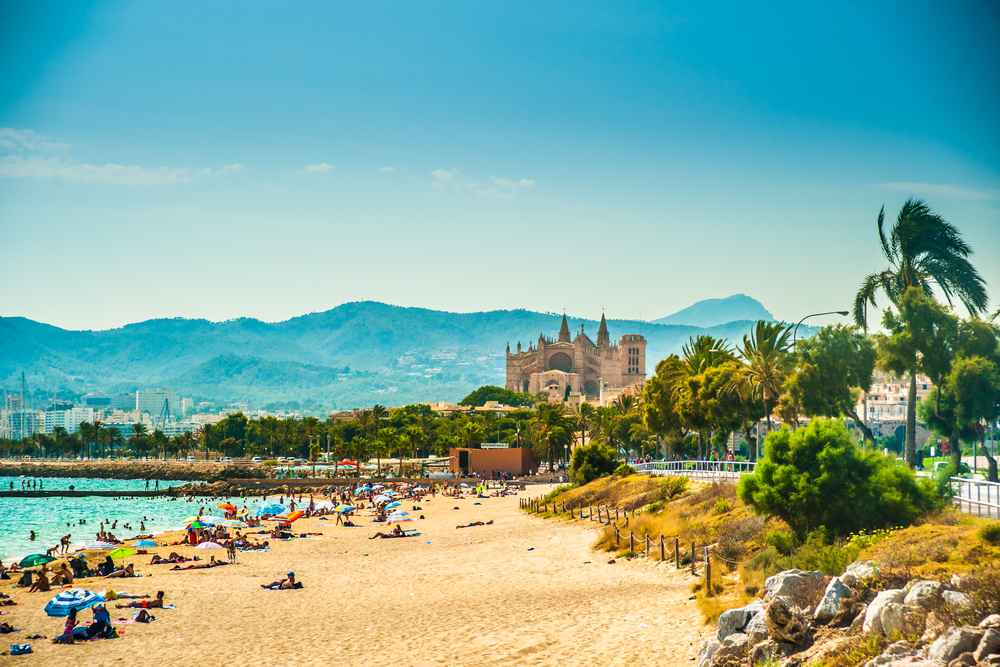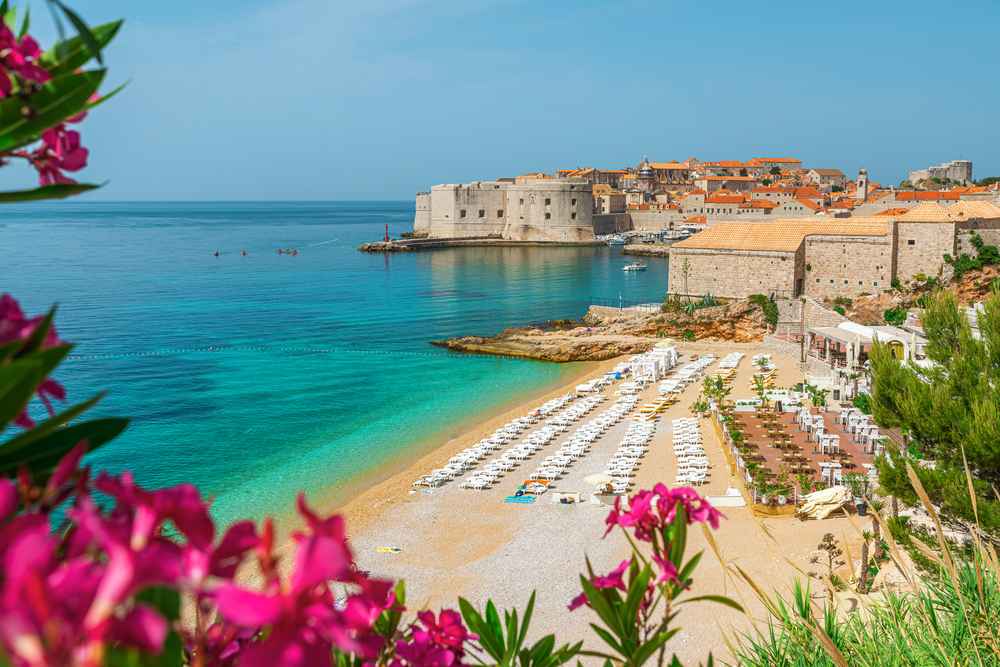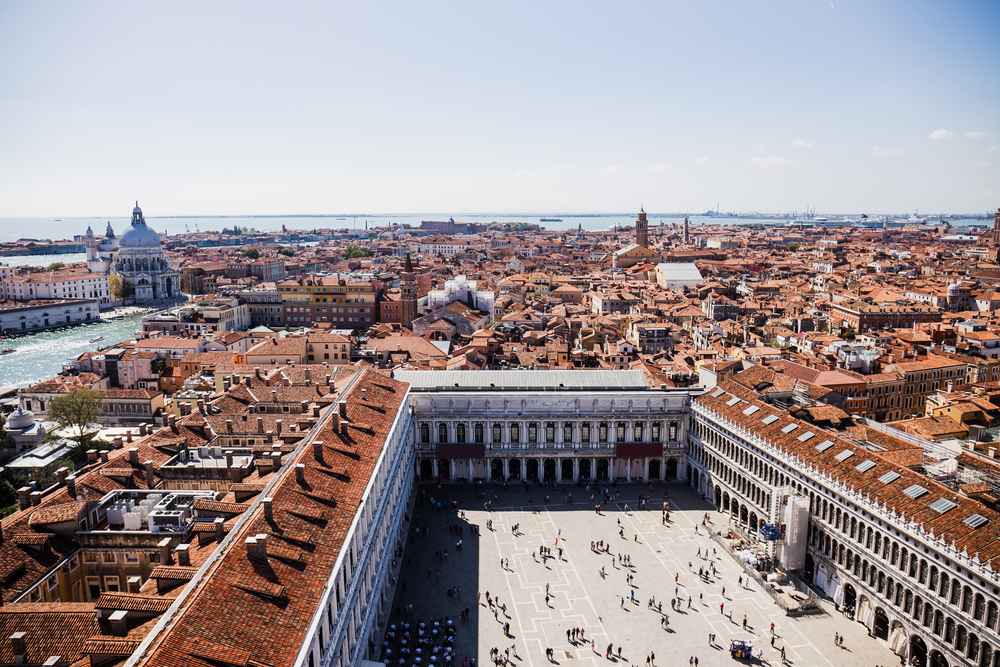Thessaloniki gets ready for its metro launch in November
The underground rapid transit lines have been under construction for almost two decades due to various project delays
 TheMayor.EU logo
TheMayor.EU logo 
Glamorous, unnecessary or even illegal? Depends on which streets you choose to wear a bikini in Europe, Source: Depositphotos
You may be on vacation, but locals see their town in a different light than you do
Summer is great because it gives a sense of freedom. Less clothing, the feeling of the sun, sand and sea on your skin. It’s the only season when we don’t have to put some extra layers on when we leave the cosiness of our homes. Well, it turns out that in some European beach destinations, the local authorities are insistent that you put an extra layer on when you leave the beach area.
We’ve managed to unearth six different, and popular, summer holiday destinations where the local municipalities tell tourists that they need to cover up when walking around on streets, squares or dining establishments, or else they may face a fine.
So, do take that into account when planning your next getaway and maybe choose another destination if you’re a bit on the exhibitionist side.
We’ve found that all six destinations are located in three very popular holiday countries for people from all over the world. These are Spain, Italy and Croatia.

No bathing suits on La Rambla as far as the eye can see. Source: Depositphotos
As far as we know, Barcelona was the first to set that trend of telling tourists to cover up. Anti-swimwear ordinances have been in place there since 2011.
For many years, locals watched on with apprehension and disappointment as crowds upon crowds of tourists started turning their beloved city into a free-for-all party paradise, strutting up and down the iconic La Rambla boulevard wearing speedos and thongs, or even Mexican sombreros…oh, Lord!
That only reflected how wildly insensitive and tone-deaf holidaymakers can be. For one, Barcelona was not built as a sea resort that only exists to cater to the whimsies of tourists starved for sun and fun.
It’s actually a large city with a long, rich and complex history and culture of its own. It is the capital of one of the wealthiest Spanish regions – Catalonia, and it even has the ambitions to be the capital of a sovereign country given the vibrant independentist movement there. (But we aren’t taking sides)
So, if you wouldn’t walk wearing swimming trunks only on a major street of London’s City or New York’s 5th Avenue, then why would you think it would be any more acceptable in Barcelona?

It looks tempting to venture into Palma de Mallorca straight from the beach. Source: Depositphotos
The capital of the Balearic Islands is another Spanish city that wanted to make a point that its existence is not just a question of being a sea resort. Following in the footsteps of Barcelona, the local authorities adopted a similar ordinance in 2014, which prohibits the use of swimming trunks and bikinis as streetwear.
The thing with Spanish cities leading the trend on this policy is that, apart from real urban pride, it is mixed with the general customs of Spanish culture. It is just seen in poor taste, to say the least, to walk skimpily clothed in public areas where most people are dressed in daily attire.
Some restaurants in Spanish beach communities will allow you to dine in your swimwear; however, you should not go inside the establishment. You will be able to eat in the outdoor seating area. Even in this instance, though, the custom is to cover up.

Banje Beach offers a splendid view of Dubrovnik's old town. Source: Depositphotos
Dubrovnik’s situation might be similar to the Spanish cities, but even more extreme somehow. You see, that Croatian city, popularly known as the Pearl of the Adriatic, was reported to be the most suffering from overcrowding due to tourism in Europe. With 36 visitors for every inhabitant, even the ever-fashionable Barcelona can’t hold a candle to it.
This many tourists, apart from hard cash, also bring in a ‘hard-to-shake-off’ sense of alienation from one’s own surroundings. After all, native Dubrovnik people also have the right to feel like their city is home and not just an amusement park or a movie set.
So, some five years ago the local authorities set off its “Respect the City” policy, which aims to educate tourists about proper behaviour and respecting the local heritage and customs in the medieval quarter. This year, they also started defining which activities are part of this desirable behaviour, and among them, perhaps to no surprise, we see the prohibition to stroll around in a bathing suit, topless or even nude (in case someone was inclined to go to that end).
If caught red-handed (or red-skinned basically) there’s a threat of 265 euros, but that likely is levied only on repeat offenders.

Authorities in Split are directly letting tourists know what's not allowed. Source: Grad Split
The largest city on Croatia’s Dalmatian coast – Split – liked Dubrovnik’s example, and its city council has also decided to institute the same ban, applicable to old town district, which just like Dubrovnik’s is under the protection of UNESCO. In the case of Split, at least from this sign we see, might be even saltier – it will set you back up to 300 euros.
Taking a ferry from Split for an hour can get you to the beautiful island of Hvar. Despite its somewhat party fame and a destination profile for youngsters, its administration also frowns upon the free parading of the latest models of swimwear on the narrow and staircased streets of the main town – also called Hvar.
And Hvar was a pioneer. In 2017, when the prohibition was introduced by Mayor Rikardo Novak (then recently elected), the fine reportedly reached some 600 euros. It must’ve worked; on a recent trip to Hvar, we saw no bikini-strutting people in town.

Tourists arriving in Sorrento train station...and keeping their regular clothes on. Source: Depositphotos
And then, there’s Italy – known for a large coastline, an immense trove of historical treasures and basically no heavy party beach destinations. It’s always been a place more associated with the fine glamour and spark of la dolce vita.
Nevertheless, the mayor of Sorrento, on the picturesque Amalfi coast, must’ve noticed that things are sliding in terms of dress code attire if he felt the need to impose a new bylaw prohibiting swimwear on the streets.
If you’re feeling brave and want to challenge the law, you’d better prepare 500 euros for the fine.

Venice - not exactly a beach destination anyway. Source: Depositphotos
In Italy, as far as we could trace the story of the anti-beachwear-as-streetwear, the first to kick off the fuss might have been the grand old Serenissima, as the city of Venice has historically been known.
Back in 2013, a campaign called ‘Venezia è anche tua, rispettala!’ (Venice is yours too, respect it!)/ Printing posters in several foreign languages, the officials decided upon a set of ten guidelines that encouraged visitors to avoid doing certain indecent things, such as picnicking near St. Mark’s Basilica, swimming in the canals and you guessed it, walking around bare-chested or wearing a bikini. The fine? Nice and cool 500 euros.
And they’re right. Venice was never meant to be a beach city anyway. Don’t try to turn it into one. Plus, this is Italy – you’d be guilty of breaking the fashion laws, too.
Do you know other places in Europe that have a similar beachwear dress code restriction for their public areas? Feel free to write to us and let us know so we can update this article.

The underground rapid transit lines have been under construction for almost two decades due to various project delays

Now you can get your wine in Talence by paying directly in Bitcoin

That’s because the state has to spend money on updating the railway infrastructure rather than subsidizing the cost of the popular pass

Rethinking renewable energy sources for the urban landscape

The examples, compiled by Beyond Fossil Fuels, can inform and inspire communities and entrepreneurs that still feel trepidation at the prospect of energy transition

Now you can get your wine in Talence by paying directly in Bitcoin

The 10th European Conference on Sustainable Cities and Towns (ESCT) sets the stage for stronger cooperation between the EU, national and local level to fast track Europe's transition to climate neutrality.

At least, that’s the promise made by the mayor of Paris, Anne Hidalgo

The underground rapid transit lines have been under construction for almost two decades due to various project delays

At least, that’s the promise made by the mayor of Paris, Anne Hidalgo

Hostal de Pinós is located in the geographical centre of the autonomous region

Despite its church-y name, the district has long been known as the hangout spot for the artsy crowds

Urban dwellers across the EU are having a say in making their surroundings friendlier to people and the environment.

Forests in the EU can help green the European construction industry and bolster a continent-wide push for architectural improvements.

Apply by 10 November and do your part for the transformation of European public spaces

An interview with the Mayor of a Polish city that seeks to reinvent itself

An interview with the newly elected ICLEI President and Mayor of Malmö

A conversation with the Mayor of Lisbon about the spirit and dimensions of innovation present in the Portuguese capital














